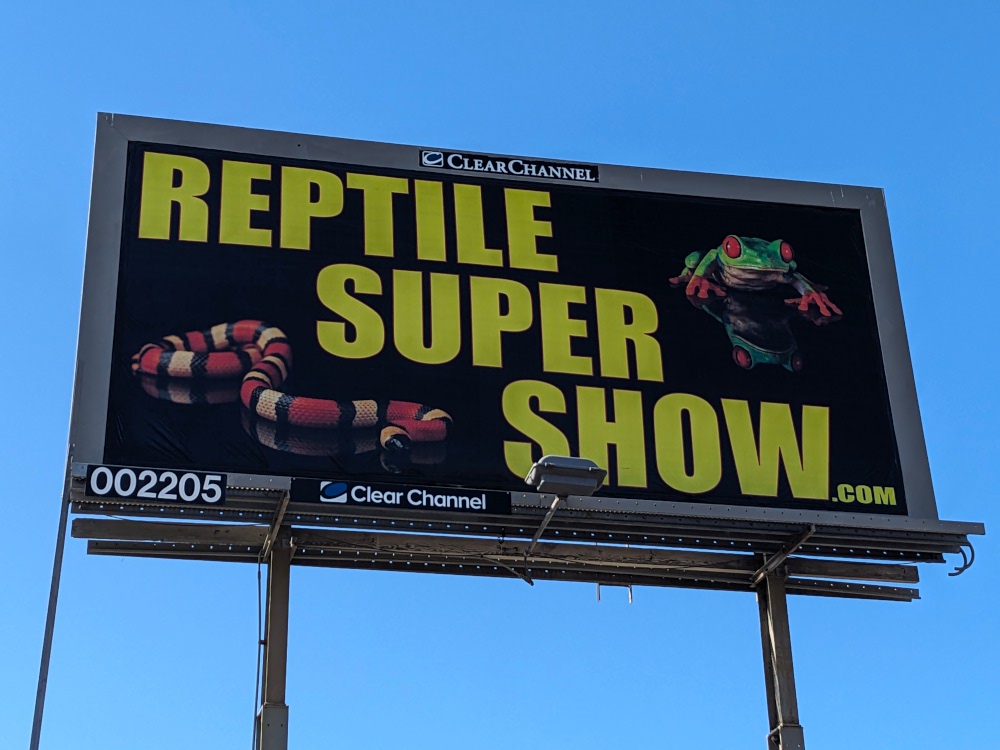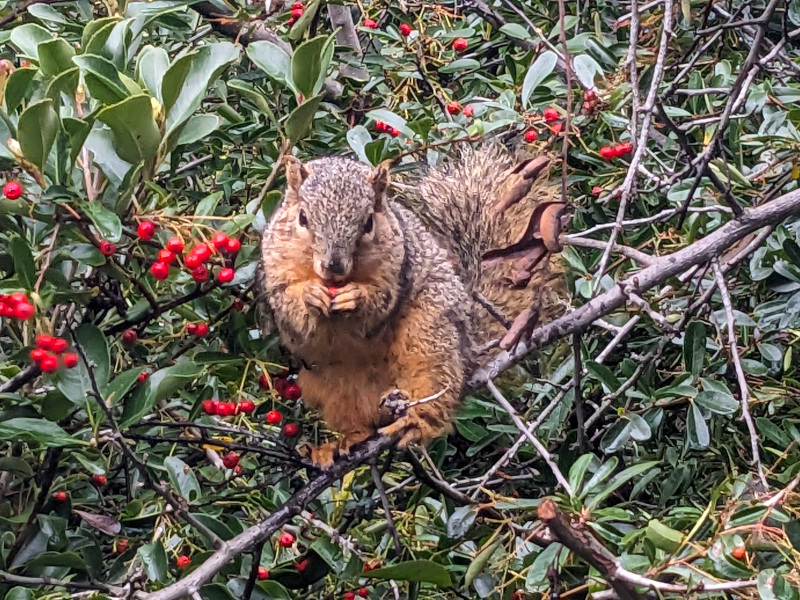
Reptiles! Reptiles! Reptiles! Okay, okay, we’ll let some amphibians in too. As a treat.
(Billboard spotted while walking around last week.)

Reptiles! Reptiles! Reptiles! Okay, okay, we’ll let some amphibians in too. As a treat.
(Billboard spotted while walking around last week.)


This squirrel was completely nonchalant about two humans standing a few feet away. It just kept grabbing more berries and eating them.
In retrospect, I should have pulled out the better camera once I was sure I had some clear shots on the phone, since it probably wouldn’t have gone anywhere.
~95% of lizards I’ve spotted since joining iNaturalist have been Western Fence Lizards. (Occasionally they’ve even been on fences.)
Once I found one that was identified as a Great Basin Fence Lizard!
When I looked it up, it turned out to be a subspecies of Western Fence Lizards.
As soon as I stepped out the door for a walk this morning, I heard a lot of crows making a huge racket down the street. They were perched on a telephone pole, flying up and swooping around like they were trying to scare off a hawk.
Of course I walked toward them to see what was going on.
By the time I reached the end of the block, the crows had given up and flown off. But I noticed people were out in their front yards looking up at a tree. It turns out the crows had been trying to scare off a hawk that had killed a pigeon and settled into the tree to eat it. At first I could only see the occasional feather raining down, until I moved to where I could see through a gap in the branches. Continue reading
Grooming geese: Nature’s panorama fail.
Seriously, though, I was determined to get some decent photos of these two geese because they are unusual. They’re clearly Canada Geese in terms of body shape and the pattern of markings. But every other goose of this type that I’ve seen has had white patches on the sides of the head, not brown patches, and lighter colored wings.
I uploaded the photos to iNaturalist, and since iNat’s AI didn’t have any better suggestions for species, I tagged them with the Branta genus. (Observations: one goose and another goose.) Someone who knows more about geese than I do suggested they might be hybrids, or they might be Canada Geese with a mutation.
I’ll have to keep an eye out for this pair the next time I’m there. I know a lot of the waterfowl use it as a migration stop, but I’m pretty sure some of the ducks and geese live there year-round.
An Anna’s hummingbird perched at local park. Most of the time they don’t stay in one place long enough for me to even focus on them, never mind catch a photo. Even when they pause somewhere like this one, it’s usually just for a few moments before they fly off again.
Of course, the reason the bird was staying in one spot was that it was grooming itself, so I also had quite a few shots that looked…less impressive.
Of course my 2000th observation posted to iNaturalist would be the Goodfeathers!